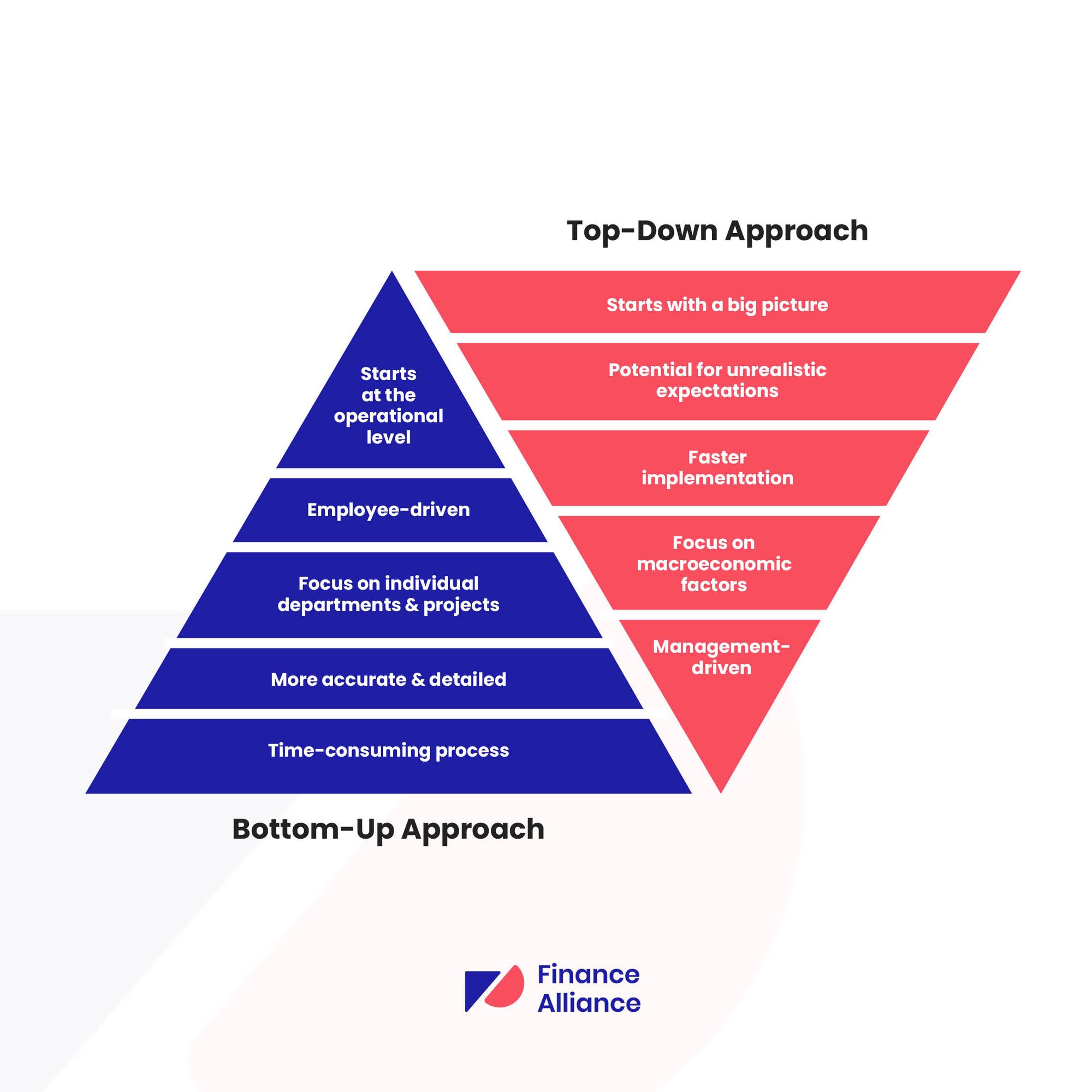When it comes to guiding decision-making, allocating resources, and ensuring an organization's long-term financial stability.
Budgeting and forecasting are two crucial FP&A activities. Forecasting and budgeting are connected but separate activities with differing goals, methods, and results.
Topics covered:
What is budgeting?
Budgeting is the process of planning and allocating resources for a specific period, such as a fiscal year. It involves setting revenue and expense targets, determining resource needs, and managing cash flow.
A budget is a blueprint for how the company is expected to do business in the next financial year. It forms the basis of business operations in the year ahead.
It dictates the decisions relating to:
- Where to invest
- What costs to cut
- Where to allocate more resources
- Where to focus specific efforts
FP&A teams work with various other departments/business units/functions to prepare departmental budgets and consolidate them into one overall company budget.

What is forecasting?
A forecast is an estimate of what the company will achieve if it keeps performing as it is. It shows you how far you'd be off budget if you kept going as is.
FP&A teams create, update, and maintain financial models (in Excel or a forecasting tool). They maintain detailed forecasts of the company’s future operations.
After the budgets are done. Every quarter, we reflect on what has actually happened versus the budget. Not everything goes as planned. This is where quarterly forecasting becomes important. It helps to quantify and manage the gap between the original budget and reality. According to the latest insights, a forecast is where the company is genuinely headed.

Budgeting vs forecasting : Understanding the key differences
- Purpose: Budgeting is the process of creating a financial plan for a defined period of time, usually a fiscal year. Forecasting is the process of predicting future financial outcomes based on historical data and trends.
- Inputs: Budgeting starts with setting financial goals and allocating resources to achieve them. Forecasting uses past financial data and market trends to make predictions.
- Time horizon: Budgeting is typically a long-term planning tool that covers a fiscal year or more. Forecasting can be done for any period of time, from the next month, quarter, 1 year, 3 years.
- Precision: Budgets are often detailed and precise, with specific revenue and expense targets. Forecasts are less precise, due to the uncertainty of future events.
- Flexibility: Budgets are static and sometimes set in stone, making it difficult to change them during the year. Rolling forecasts, on the other hand, can be updated as new information becomes available.
- Level of detail: Budgets are usually more detailed, covering all expenses and revenues. Forecasts are often high-level and less granular.
- Use: Budgeting is used to guide financial decision-making and measure performance against goals. Forecasting is used to anticipate future events and adjust plans accordingly.
- Decision-making: Budgeting is a key tool in the decision-making process, as it helps managers allocate resources and prioritize initiatives. Forecasting is used to inform and support decision-making, by providing a view of potential future outcomes.
- Role of management: Budgeting often involves input and approval from upper management, while forecasting may be done by finance teams with individual departments.
- Accuracy: Budgeting is based on well-researched assumptions and estimates, but may still be subject to significant deviations from actual results. Forecasting accuracy can be impacted by unpredictable events and market changes.
- Relevance: Budgeting is important for companies that need to plan and manage their money, while forecasting is important for companies that want to know and prepare for future market conditions.
- Compliance: Budgeting is sometimes tied to regulatory requirements and financial reporting standards, while forecasting is not necessarily subject to the same level of compliance.
- Complexity of financial models: Financial modelling plays an important role in both Budeting and forecasting. However, in general budgeting may utilize less complex financial models, while forecasting often relies on models and algorithms to predict future outcomes.
- Emphasis: Budgeting places emphasis on controlling costs and managing resources, while forecasting focuses on anticipating future financial outcomes.
- Continuous process: Budgeting is a process that is typically done annually or semi-annually. While forecasting is a continuous process that is updated as needed to reflect changes in market conditions.
- Real-time vs historical data: Forecasting typically uses real-time data and market trends, while budgeting may use historical data and assumptions.
- Iterative process: Both budgeting and forecasting are iterative processes. Budgeting may involve an iterative process, with multiple rounds of revisions and updates. While forecasting may involve a more dynamic and ongoing process.
- Basis of comparison: Budgeting provides a basis for comparing actual performance against planned results. Forecasting provides a basis for evaluating potential risks and predicting future results.
- Dynamic vs static: Forecasting is a process that changes over time, while budgeting is a process that is set for a certain period of time.
- Input from other departments: Budgeting may involve lots of inputs from other departments, such as marketing and sales. While forecasting may involve fewer inputs and may be primarily done by finance and data analytics teams.
Budgeting and forecasting both serve different purposes. And are important tools for financial planning and decision-making.
Learn how to create budgets & forecasts to support strategic decision-making
Take your budgeting and forecasting skills to the next level by learning the practical techniques used today at leading companies from an experienced FP&A leader – Christian Wattig.
Christian is an accomplished FP&A expert with over a decade of leadership experience in multinational corporations and fast-growing tech start-ups.
With Christian Wattig as your coach, you’ll learn how to navigate the five phases of annual budgeting: Pre Kick-Off, Joint Planning, Consolidation, Iteration, and Final Alignment. You’ll also learn to create accurate forecasts that empower leaders to make better decisions.



 Follow us on LinkedIn
Follow us on LinkedIn




